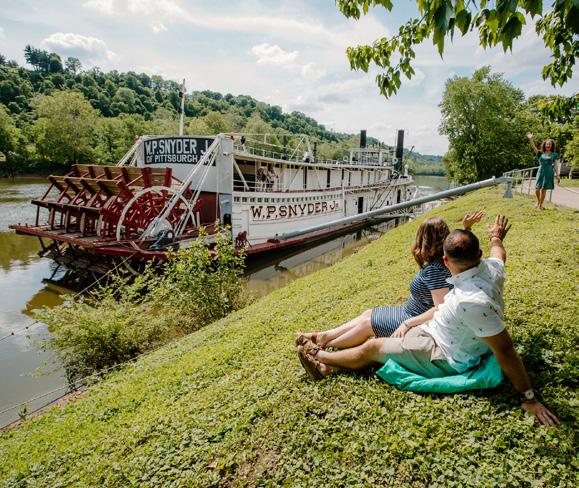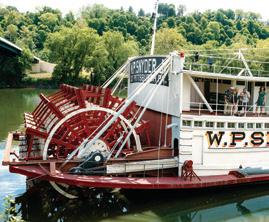
2 minute read
STEP BACK IN TIME Campus Martius Museum at the
At the confluence of the Ohio and Muskingum Rivers in Southeast Ohio, the city of Marietta played a starring role in the northwestern expansion of the United States.
By Laura Pytlik
This historic river town is home to the Campus Martius Museum, where the story of General Rufus Putnam and his intrepid group of pioneers is chronicled through fascinating exhibits and artifacts.
As you enter the grounds of the Campus Martius Museum, you’re stepping back in time to 1788, when our country was still an infant and this land was contested among several American Indian Nations, the Americans and the British. When Putnam and other Revolutionary War officers of the Ohio Company arrived at the verdant lands along the riverbanks, they constructed a civilian stockade as protection during the Northwest Indian Wars, making Marietta the first permanent civilian settlement of the Northwest Territory.
After the 1795 Treaty of Greenville ended the war and limited Indian Territory to northwest Ohio, the stockade was dismantled. Marietta continued to grow and thrive as an important gateway to the north and west. Today, the museum remembers the legacy of the American pioneers and history of the land. In the museum, tools and other objects made by American Indians over thousands of years paint a picture of the region’s diverse and enduring Native peoples. History unfolds through exhibits about The Ordinance of 1781 and the Ohio Company. Readers of David McCullough’s book The Pioneers will recognize the family names featured in his best-selling narrative. The Pulitzer Prize winning author conducted extensive research in the Marietta College Legacy Library’s Special Collections, studying original journals and documents to accurately portray the ordeals and triumphs of those first pioneers.
Grasp how history unfolds as the museum continues to tell the story of Marietta through the 20th century. You’ll see how the townspeople made their living through crafting rifles, building furniture and even producing oil. Further exhibits take you into the industrial age and beyond, capturing Ohio’s rapid growth and expansion.
Home Sweet Home
Get an intimate look into pioneer life inside the Rufus Putnam House, still standing on its original location, now sheltered by the museum walls. The house’s wooden sides still bear visible scars of the axe and tools used so long ago, when the lush forest provided ample lumber for the new settlement.

Inside the house, interpretive guides help you imagine daily life. Learn how Mrs. Putnam cooked wild game over an open fire. Take a peek in the nook where General Putnam kept his private papers and the bedchamber the family shared. Although the pioneers’ lifestyle may have been modest, it was also comfortable, and the vignettes include gracefully curved chairs and well-crafted fixtures.
Land Grant
Outside the walls of Campus Martius, you’ll find another crucial landmark. The Ohio Company Land Office survives as the oldest standing building in Ohio. The simple wood structure may be small, but its role was vital to the settlement of the Northwest Territory.
Inside the humble office, you’ll find yourselves surrounded by the memories of hopeful settlers preparing to stake their claims. Historic maps line the walls transporting you back to a different time. You can just picture the pioneers huddled around the long wooden tables recording land transactions and marking maps.
All Aboard
Get up close to a majestic, steam powered stern-wheel towboat, the W.P. Snyder Jr. Built in 1918, this beauty was the last steamboat to glide through Lock No. 1 on the Muskingum River.

It remains docked as the last intact boat of its kind and provides an interactive lesson about river transportation and the daily routines of the riverboat captains.
Standing aboard the ship, you can imagine the bygone sounds of a river bustling with traffic, whistles and steam engines mixed with the shouts of crews and dock hands.
The pioneer and riverboat eras may be in the past, but the historic city of Marietta remains as a vibrant river town proud of its role in the settling of the Northwest Territory. After spending a day or a weekend exploring Campus Martius Museum and other local attractions you’ll leave with a deepened appreciation of this beautiful river’s importance in American history.









